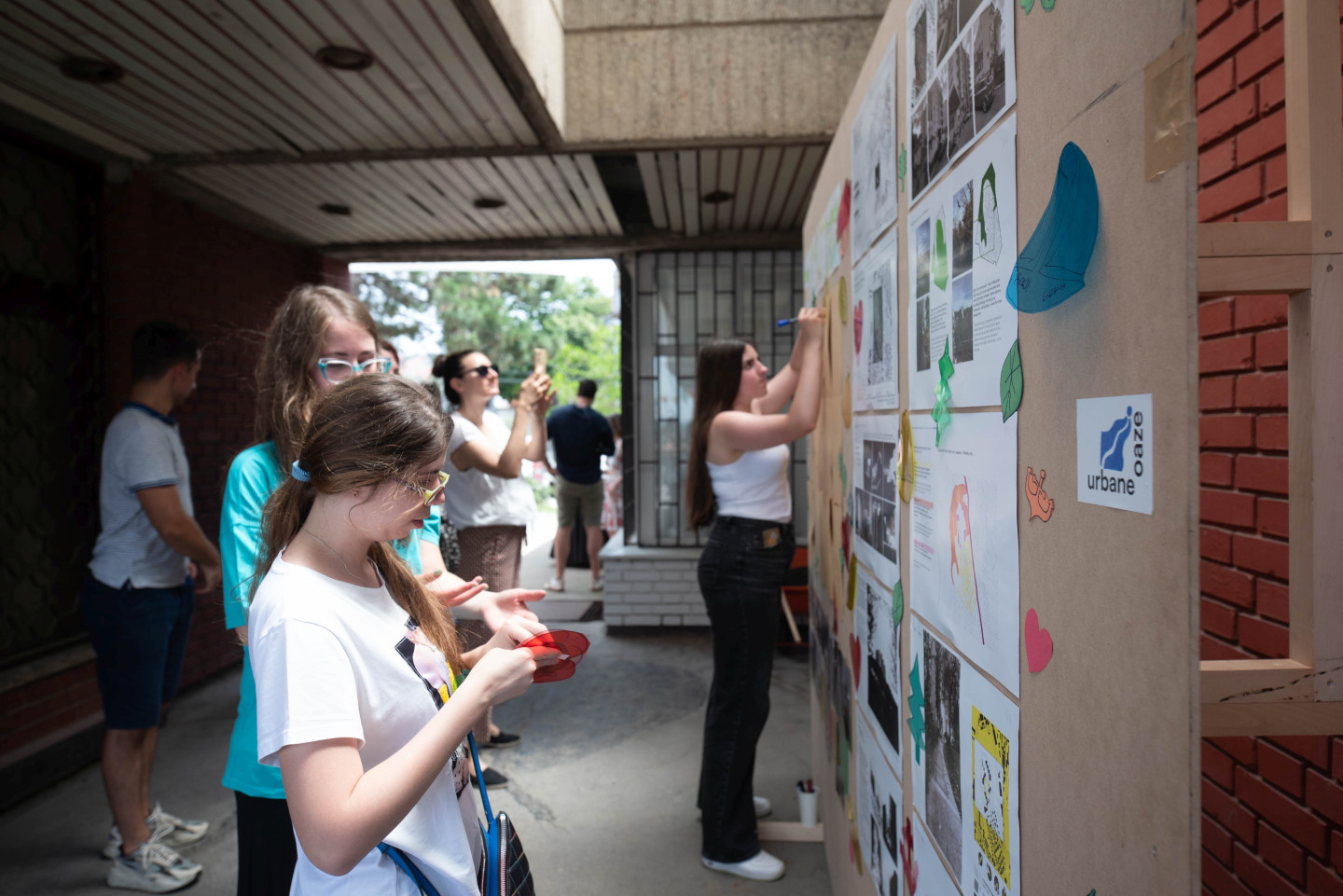A cluster strategy is essential for success
Every EUNIC cluster needs to have a strategy and a shared mission to guide your work. These four-year strategies help you take a long-term view, pool resources, and focus on the unique needs of your local context - making your work more effective and collaborative. A cluster strategy provides a framework for joint work between cluster members, local actors and EU Delegations or European Commission Representations.
In the bigger picture, these cluster strategies help EUNIC move forward with the objectives laid out in the our Strategic Framework. Our Strategic Framework is the foundation that guides everything we do - rooted in the values of co-creation, mutual learning, a bottom-up approach, and capacity building.
Submitting your strategy
When you design or revise your cluster strategy, make sure to send us a draft at clusters@eunicglobal.eu.
We are here to support you!
Whether by call or email, we can advise you along the way to make sure your strategy aligns with EUNIC’s global strategic vision, mission and objectives.
To help you develop your strategy, we have a template for you to use:

getting started
There’s no one-size-fits-all way to develop a cluster strategy - so find the approach that works best for you. To help you get started, here are a few steps that many clusters have found useful:
Start by getting to know each other
A good strategy begins with strong relationships. Take the time to connect with fellow cluster members and partners. Some clusters organise a strategy away-day - one or two days in a neutral space for informal exchanges, brainstorming, shared meals and team-building activities. It’s a great way to build trust and define shared principles, goals, and priorities.
Set up a working group
Larger clusters often create a smaller strategy working group to drive the process forward. Regular meetings help keep momentum and ensure that everyone stays aligned.
Bring more voices to the table
Many clusters host face-to-face or online strategy workshops, involving cluster members, local EU Delegation or Commission Representation staff, and colleagues from the EUNIC office. You might also consider inviting a professional facilitator to support the process.

developping a strategy: step by step
Working through the following eight steps will help you arrive at your own vision and strategy.
The process involves reflection, research and analysis in close collaboration with local partners. Your initial analysis should focus on the needs, strengths and weaknesses of the cultural relationships between the EU, your host country and local actors. This will help you outline a strategy that addresses identified weaknesses, builds on existing strengths, and responds to local needs.
1. Reflect on the principles of cultural relations
Start by reflecting on the principles of cultural relations and the broader understanding of culture — including the arts, creative industries, development cooperation, digitalisation, education, gender, heritage, human rights, language and multilingualism, social inclusion, sports, sustainability, tourism, youth, and others. As the paradigm shift towards cultural relations and a broader definition of culture underpins EUNIC’s Strategic Framework, consider how these elements can be part of your cluster’s strategy.
2. Map the cultural landscape
Start from the local context and map the cultural relationships between the EU and your host country. These questions might help guide your analysis: What cultural exchange programmes already exist? What are the political, economic and cultural aspects of the relationship that could influence your work? What is the level of interest in the EU among local audiences?
3. Understand your cluster members’ priorities
Map your cluster members’ priorities and activities in relation to the strengths and weaknesses of the cultural relationships you’ve identified. What are cluster members already doing? What are the strengths of each member? How well do their activities respond to the local needs? What are the shared interests and potential synergies for joint work?
5. Involve different stakeholders in co-designing the strategy from the beginning
Work with a range of partners to shape your strategy from the start.
The EU Delegation or EC Representation
Check the EU’s latest policy documents framing cultural relations between your host country and the EU. In most countries outside the EU, the EU has a country plan with defined priority areas. In some cases, such as in Brazil, there is even a strategy paper agreed with Member States. EUNIC, the European External Action Service, and the European Commission have also published Joint Guidelines, offering a practical framework for EU Delegations, EUNIC clusters, and local partners to build effective partnerships.
Local stakeholders
Map, identify, and involve relevant local actors such as civil society organisations, public sector entities, European and international organisations, and local authorities. Understand their social, cultural, political, and economic realities. Look for synergies that could lead to joint activities.
After completing your research and analysis, it's time to incorporate these findings into your mission and strategy!
6. Outline your mission
Based on the previous analysis, what change does the cluster want to make in four years’ time? How is the cluster going to achieve its mission?
The mission statement should be short and concise.
7. Define your strategic objectives
Once you’ve set your mission, the next step is to define the strategic objectives that will help you achieve it.
Describe the actions required to realise each objective. These actions should be overarching steps that the cluster needs to take, not specific projects. For example, strategic actions could include:
"To develop a strategic partnership with the EU Delegation."
"To design projects, in collaboration with local stakeholders, that build capacity in the areas of [specific areas, e.g. sustainability, human rights, or cultural education]."
These actions will guide your work and help ensure that your strategy stays focused on achieving its broader goals.
8. Formulate a country strategy
In countries where there are several EUNIC clusters, it’s important to develop a single, unified strategy for the entire country.
To keep the strategy focused, we recommend a maximum of three pages. Include only the most relevant, concise, and specific information that clearly outlines your goals and actions.
Relevant preparatory work such as a SWOT analysis, the outline of a timeline for activities, or an agreed governance model for the cluster may be included as an annex to the strategy.
